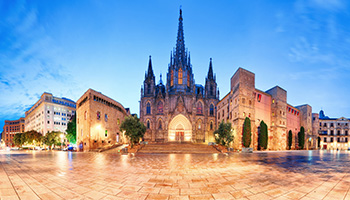Walking for hours on a 90-degree summer day is not something I would normally do voluntarily, unless it's at Parc Guell in Barcelona. This CEA CAPA-led excursion is something you'll absolutely have to do if you study abroad here. If sweating profusely in exchange for some seriously great views still doesn't sound like a good exchange, read along and I'll try to convince you.
Background
Parc Guell is huge-about 19 hectares of land to be exact! Antoni Gaudi was tasked with designing and developing this vast plot of land into a park for wealthy families in the 1900s. Upon owner Eusebi Guell's death in 1918, the city council of Barcelona purchased the land and made it a public park. Now, Parc Guell is a recognized artistic monument and a UNESCO World Heritage Site.
Turo de les Tres Crues
We started off our tour of Park Guell walking the gravel paths and I was immediately impressed by the lush trees and greenery. We decided to meander along until we reached each of the important attractions throughout the park. As we walked uphill we eventually hit the Turo de les Tres Crues, the three crosses. Three brick crosses sit atop a stone, two indicating the cardinal directions, and the other facing skywards. This is the highest point of the park, and I was able to see almost all of Barcelona from this viewpoint. My roommates and I spent an embarrassingly long time trying to pinpoint our apartment from the top to no avail.

Caption: The view from the tallest point of Parc Guell!
Carob's Viaduct
The Romanesque viaducts were the next stop on our adventure. The longest viaduct, Planter's viaduct, stretches across the park from west to east. This was one of my favorite parts of the park. Besides being a great respite from the sun, I felt like I was in a Jurassic Park movie. The pictures definitely don't portray the height of the bridge well, it's even more stunning in person.
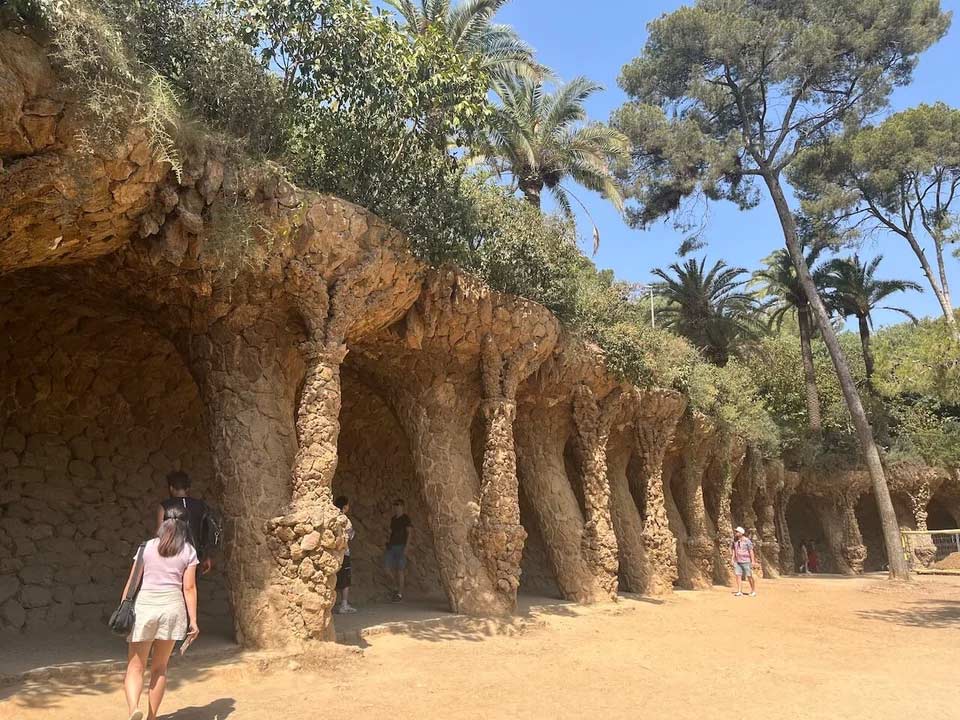
Caption: The stunning Carob's Viaduct.
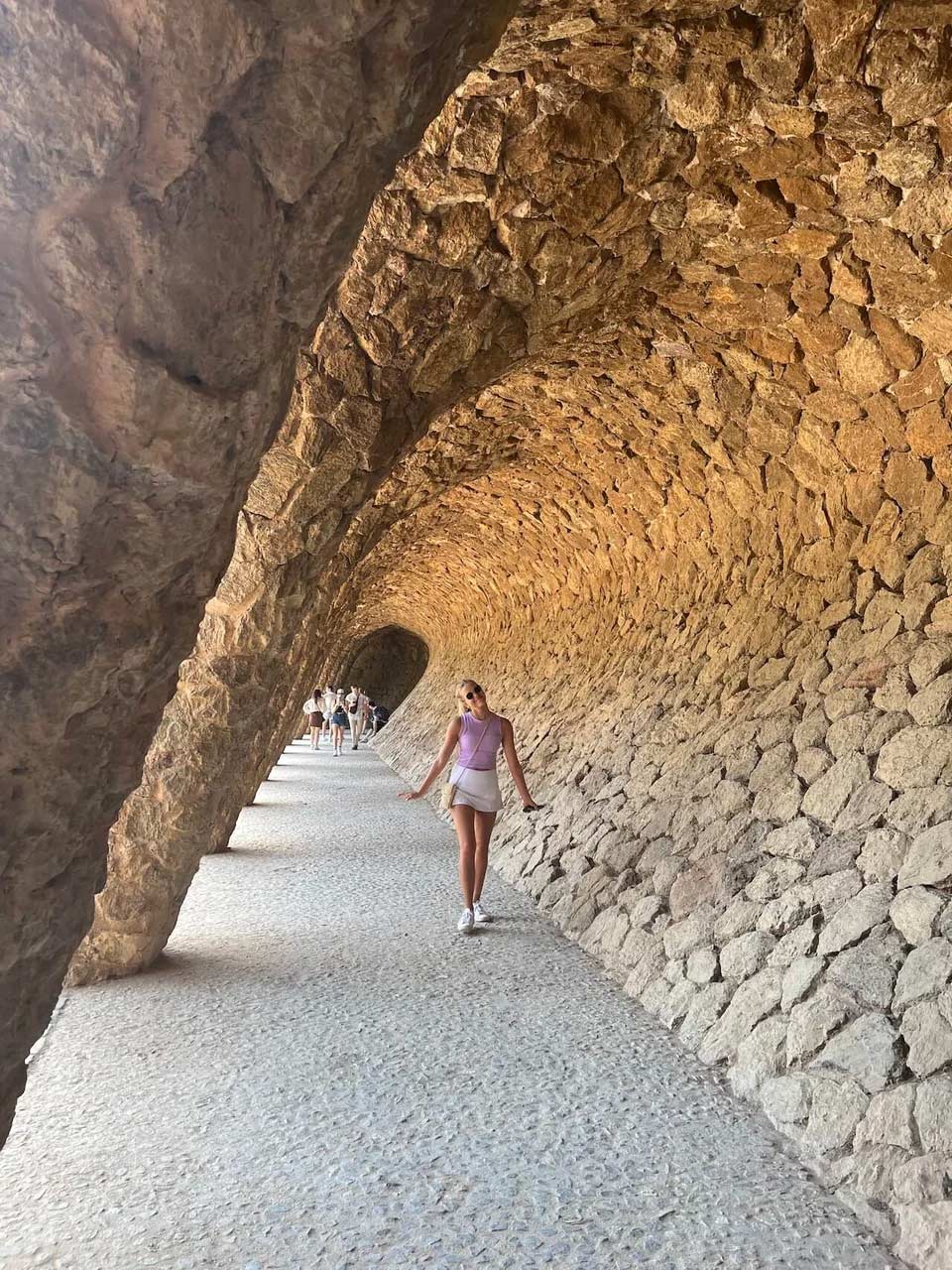
Caption: My roommate Taylor taking advantage of a great photoshoot location.
Nature Square
We finally reached Nature Square, originally called the Greek Theater in Gaudi's plans. While this was probably the busiest part of the entire park, the breathtaking beauty of the landscaping and mosaic art definitely shone through. Gaudi was inspired by nature when designing the park, taking advantage of the mountain's topography and natural shapes. That is why there are no straight lines in his designs! The mosaic that sprawls the border of the square is covered in vibrant mosaic designs. Gaudi pioneered a mosaic technique known as trencadis, or chopped, created by using small pieces of chopped ceramic to create designs.
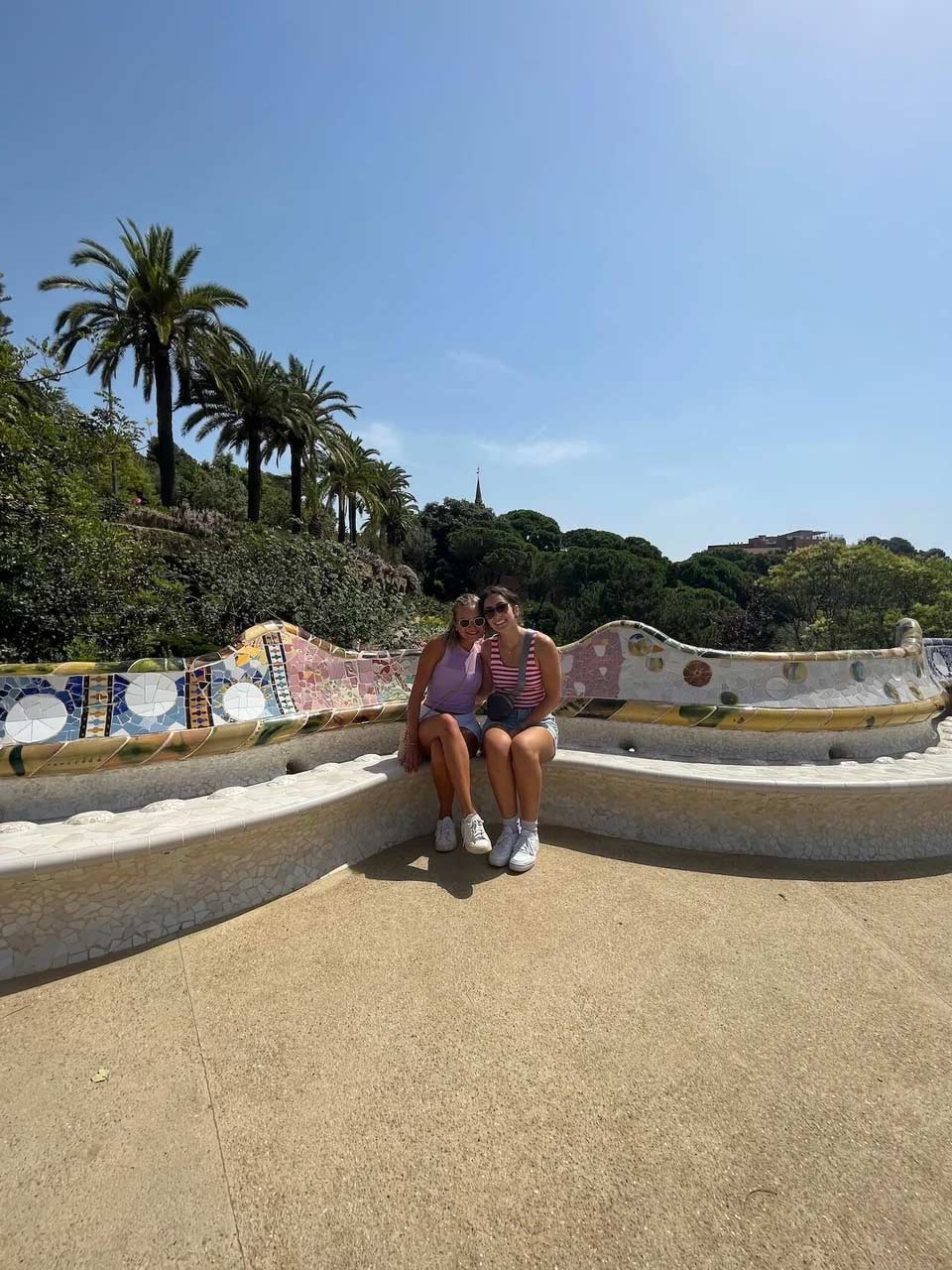
Caption: My roommate Taylor and I sitting on the mosaic benches.

Caption: The incredible landscaping of the park.
The Principal Entrance
Since we entered the park through a side entrance, we saved the best for last by leaving through the principal entrance. Truly one of the most spectacular parts of the park includes the grand staircase that leads to the Hipostila room, originally designed as a marketplace for the residents of the estate. This room is made up of 86 columns that support the bottom of nature square. As I looked up, I was stunned by even more mosaic designs-these ones definitely the most intricate. We walked past the iconic mosaic Salamander and through the pavilion to the wrought iron gate, waving goodbye to the mystical Parc Guell.
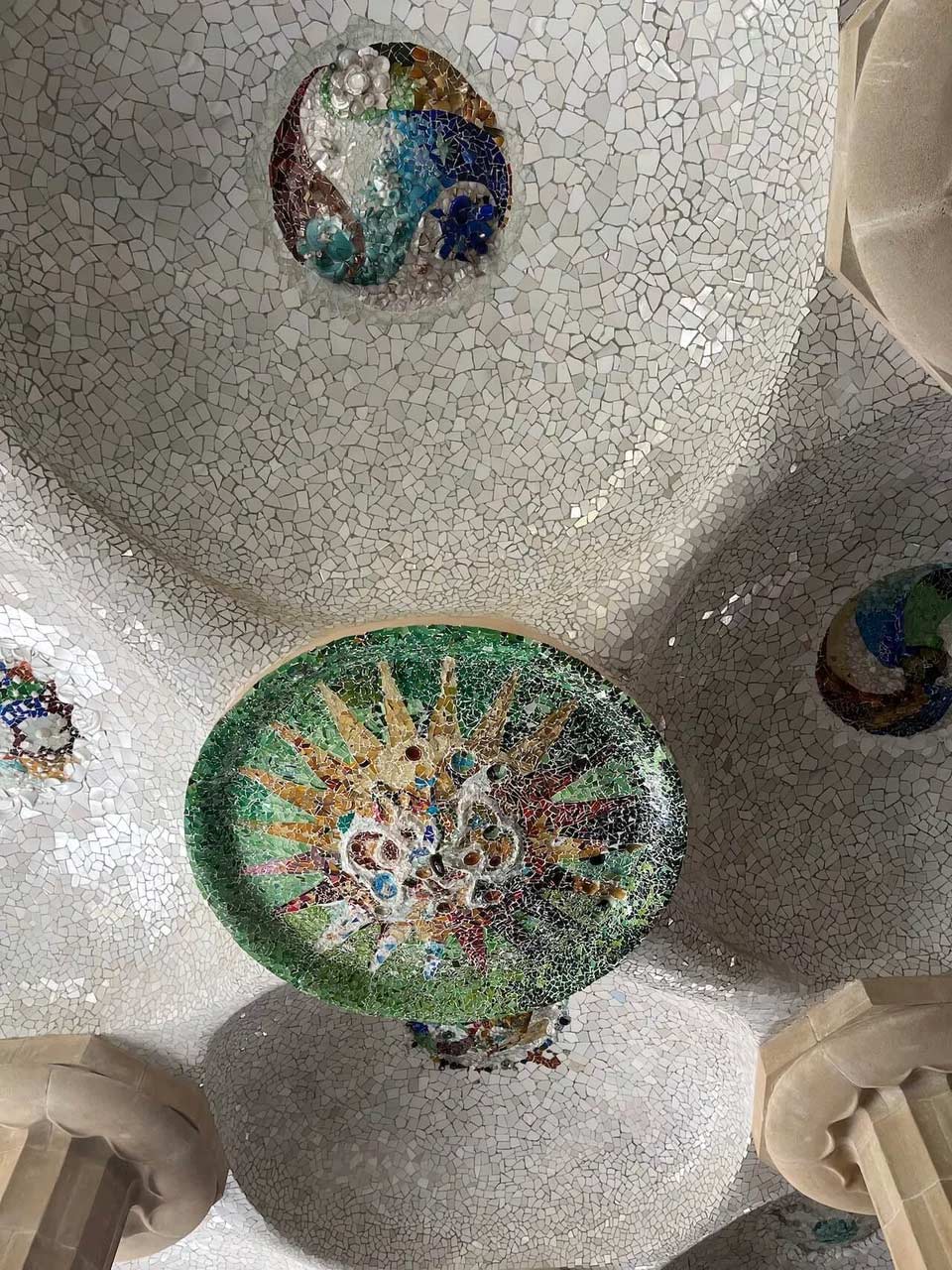
Caption: The ceiling of the Hipostila room, mosaic design courtesy of Josep M. Jujol, one of Gaudi's assistants.
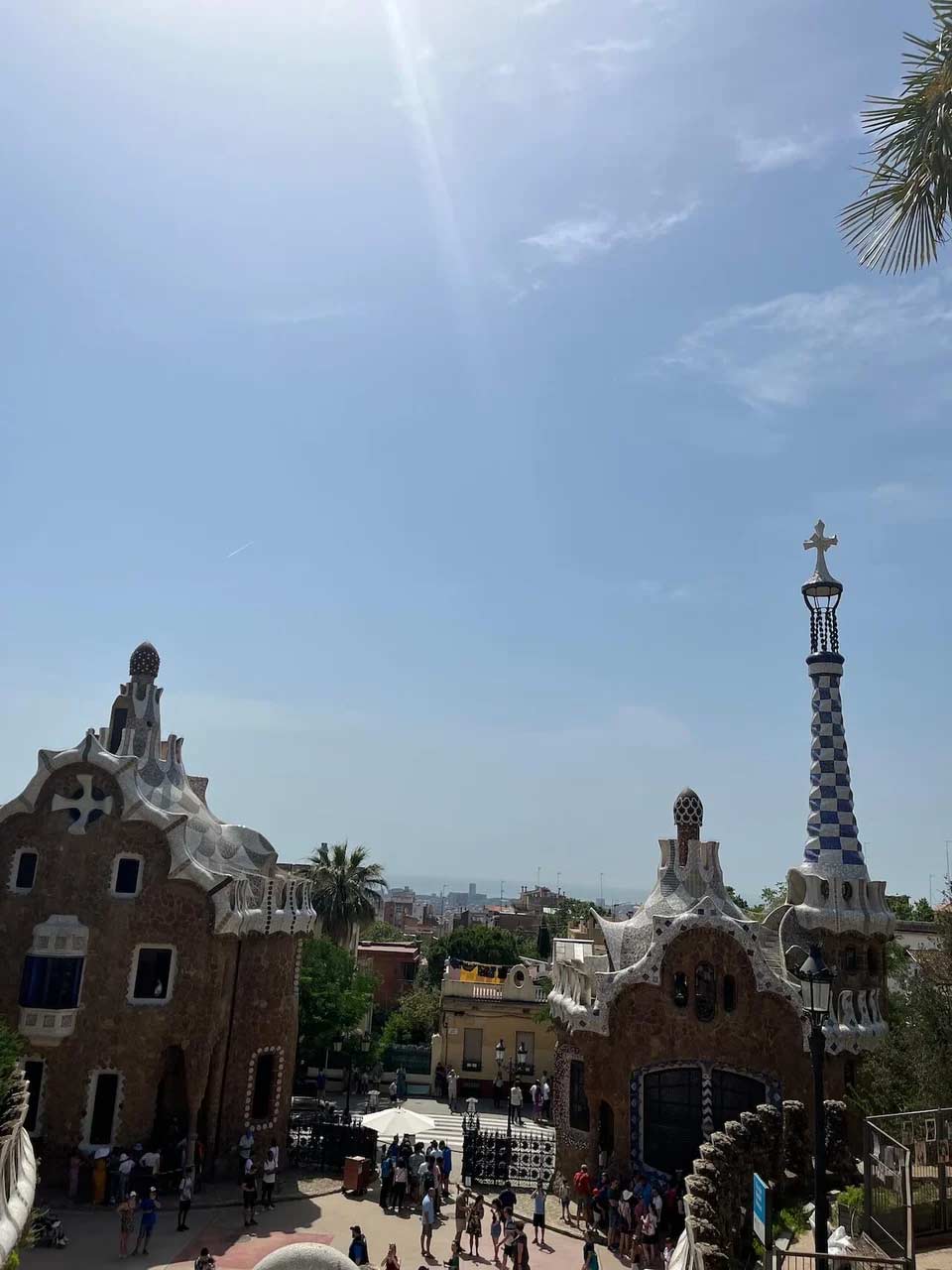
Caption: The view as we left through the principal entrance of the park.











